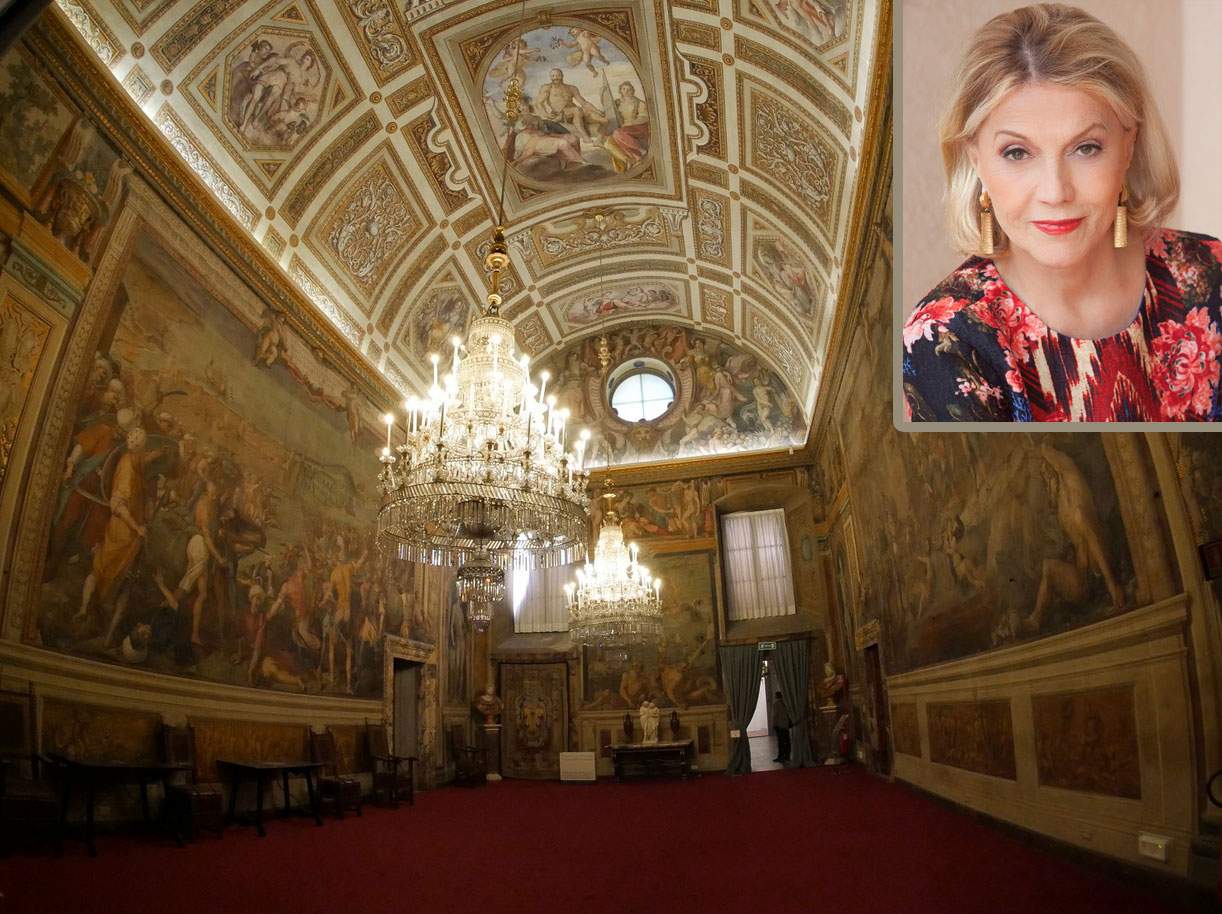Uffizi, patron Veronica Atkins donates $1 million for restoration of Poccetti frescoes
The Uffizi is receiving a generous donation of $1 million directly from the United States of America: the gift, which will fund the restoration of the Sala di Bona in the Pitti Palace decorated by Bernardino Poccetti (Florence, 1548 - 1612), comes from Veronica Atkins, a leading member of Friends of the Uffizi, a nonprofit sister organization of the Italian Friends of the Uffizi. The patron, widow of cardiologist Robert C. Atkins, and currently chair of the board of directors of the Parrish Art Museum in Water Mill, New York, as well as head of the Robert C. and Veronica Atkins Foudnation and the Atkins Young Artist Program, has been listed by Business Week magazine as one of America’s top fifty benefactors, while Newsweek has included her among the All Star Team of philanthropists. Veronica Atkins, a lifelong lover of Italian art, had already secured donations to the Uffizi in the past, and this additional donation of hers makes it possible to tackle the restoration of a long-neglected work by reintroducing it to the public eye (the work will be entrusted to theOpificio delle Pietre Dure).
The Sala di Bona, one of the oldest in the historic rooms of the entire Palazzo Pitti complex (which as is well known is now part of the Uffizi museum system), probably had the function of an antechamber, that is, a room where people paused while waiting to be presented to the Grand Duke. This solemn space was completed around 1590, but one waited until 1607 (the year of the capture of the city of Bona in Tunisia by the Knights of St. Stephen) before beginning the decoration of the walls and the vault with the depiction of the Victories of Ferdinand I de’ Medici against the Turks and, indeed, the Conquest of the City of Bona that gives the room its name. The author of the cycle of wall paintings that covers all its architectural surfaces is, as anticipated, the Florentine painter Bernardino Poccetti, a pupil of Michele di Ridolfo del Ghirlandaio, who together with his collaborators completed the work presumably before the wedding of Cosimo II and Maria Magdalena of Austria, celebrated in October 1608. The creator of the iconographic program was Benedetto Buonmattei, a priest and academician of the Crusca. Currently, the paintings are clouded and altered by a thick layer of restoration fixative, which has yellowed and darkened over time, causing the original color scheme to veer into brown tones. This was certainly not Poccetti’s typical palette, and the restoration is primarily intended to revive the lighter, brighter hues used by the artist. This important intervention will also resolve other phenomena of degradation, including color exfoliation in the vault’s backgrounds and widespread plaster detachment, protecting one of the most interesting examples of early 17th-century Florentine art history, and the history of the Medici patronage.
“These episodes of rare generosity,” comments Uffizi Director Eike D. Schmidt, “mark a turning point not only in the history of the Uffizi Galleries, but also of the city. Many Florentines are not familiar with the Sala di Bona, a true jewel set among the rooms of the Pitti Palace, because the current conditions do not allow them to fully admire the scenes depicted on the walls. Thanks to this donation and the restorations that the Opificio delle Pietre Dure-a Florentine excellence in the field-will finally be able to undertake, everyone will be able to appreciate not only the greatness of a painter like Bernardino Poccetti, but also learn about fundamental episodes in Medici history. This most interesting example of early 17th-century painting is now coming back to life thanks to the generosity of a foreign donor, proving that art is a universal heritage, that the Uffizi Galleries are custodians of an immense treasure, and that at every latitude there is a call to protect it.”
“Among the Friends of the Uffizi,” declares Maria Vittoria Colonna Rimbotti, president of the Friends of the Uffizi and Friends of the Uffizi, on the other hand, “Mrs. Veronica Atkins represents for me the most emblematic and virtuous example of true patronage, born here in the Renaissance, but much more felt in the U.S. Perhaps it is thanks to the long-standing practice of defiscalization applied in America, which has served an educational and awareness-raising function: in fact, I must acknowledge that American donors and supporters are very attentive and interested in the artistic value of the restorations, rather than in the return of the publicity image.”
Pictured: the Bona Hall and Veronica Atkins.
 |
| Uffizi, patron Veronica Atkins donates $1 million for restoration of Poccetti frescoes |
Warning: the translation into English of the original Italian article was created using automatic tools. We undertake to review all articles, but we do not guarantee the total absence of inaccuracies in the translation due to the program. You can find the original by clicking on the ITA button. If you find any mistake,please contact us.





























